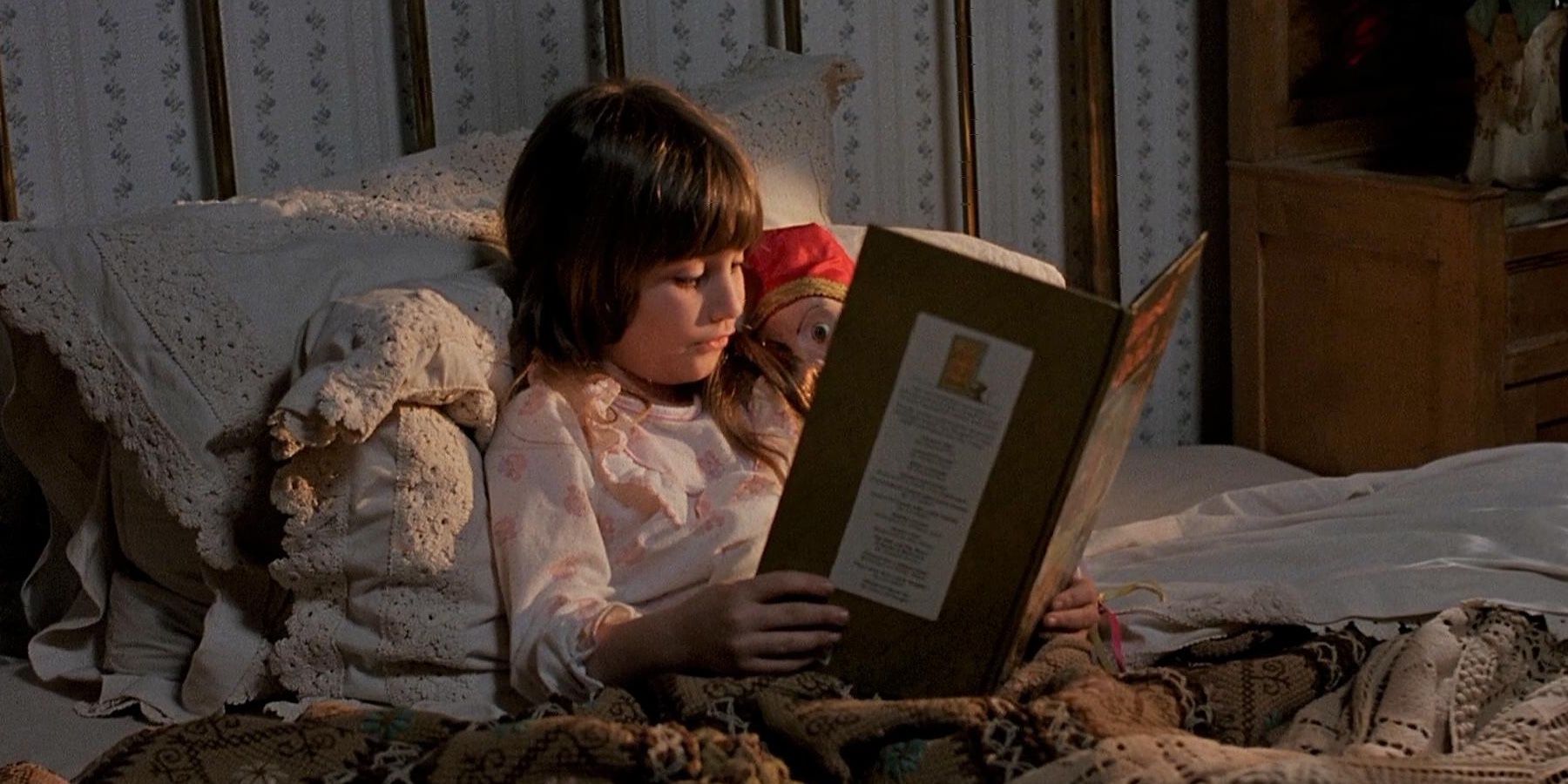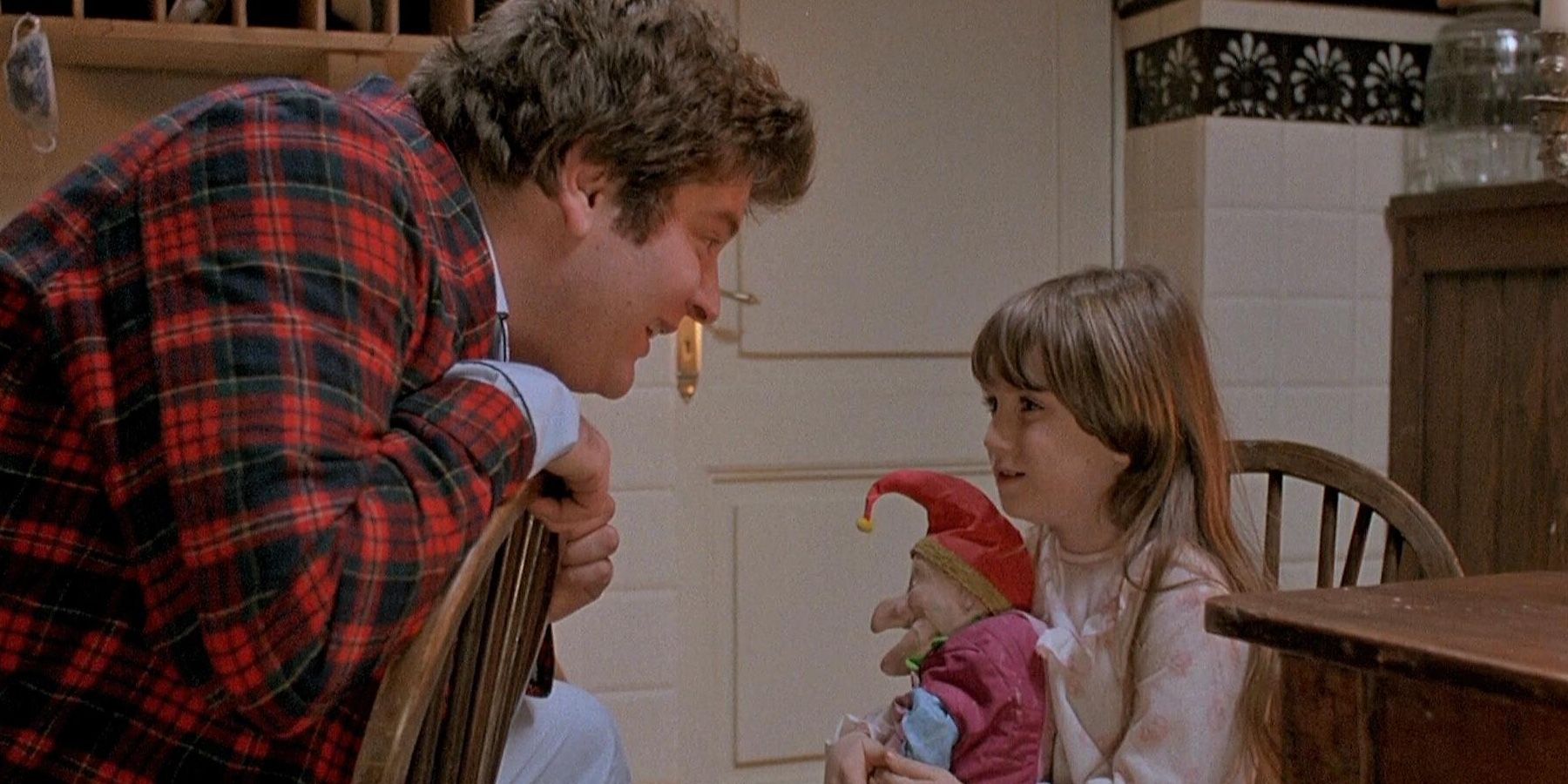Dolls: a symbol of innocence and imagination, but also a common fear among many. Show anyone a picture of Chucky and, whether they’ve seen Child’s Play (1988) or not, they’ll recognize the killer doll. Many don’t know that the 1980s were actually a rather significant and well-established decade for the killer and possessed doll subgenre of horror.
One of these lesser-known killer toy films is Stuart Gordon’s Dolls (1987), released just a year before Child’s Play. Dolls is an oddity in the killer toy subgenre, with its unique mix of horror and gore, yet it has an overall sense of childlike purity.
10 Underrated ‘80s Horror Movie Villians
A 7-year-old girl named Judy (Carrie Lorraine), along with her abusive father David (Ian Patrick Williams) and rather frightening stepmom Rosemary (Carolyn Purdy-Gordon), encounter a spooky mansion while pulling over due to a severe thunderstorm. The house’s owners Gabe and Hilary (Guy Wolfe, Hilary Mason), an elderly couple with eerie grins smiling ear to ear, welcome them into their home to take shelter. Also joining for the night is a goofy, almost childlike businessman named Ralph (Stephen Lee) and two beautiful hitchhikers (Bunty Bailey, Cassie Stuart). Upon entering, they discover the mansion is filled with thousands of dolls in each room, ranging from cutesy dolls to rather disturbing ones. Before long, it becomes obvious that Gabe and Hilary are puppet makers with rather sinister intentions.
For a low-budget 80s slasher film, Dolls holds a lot more symbolism than might meet the eye. The dolls are killer dolls, yes, but they have a lot more meaning than that. They are a symbol of the loss of innocence. Judy and Ralph are the innocents. The two gravitate towards each other immediately: Judy because she is an actual child and wants to get away from her awful parents, and Ralph seems to have never grown up himself. When Judy claims that the dolls are alive, Ralph is the only adult who believes her.
The film appears to be a fight against good vs. evil. The dolls slaughter every “evil” visitor in the house throughout the film, besides Judy and Ralph. This is because Judy and Ralph never lost their love of toys and succumbed to the dull reality of life. Judy’s parents are the evils, being abusive to Judy, emotionally and physically. The owners of the house, Gabriel and Hilary, aren’t labeled as good or evil, as they simply are the puppet masters, orchestrating this all for the well-being of children. What are they doing? Punishing immoral humans by putting their souls in their dolls for eternity.
The film plays out like an old fairytale- a rather grim fairytale: Evil stepmother, horrible father, mean older sisters (the hitchhikers), a witch, a toymaker, and a stormy night, all sounding somewhat similar to Hansel and Gretel. Instead of siblings abandoned in a forest, though, Judy and her parents are abandoned during a thunderstorm; the “witch” they encounter is Hilary, and the toymaker is Gabe. They don’t kill and eat the children though; they kill the parents. The house isn’t filled with gingerbread and pastries either; it is filled with hundreds of dolls.
Everything about Dolls screams the 80s: The eccentric colors, the over-the-top makeup, and the 80s-esque creepy lullaby playing throughout the film. The dolls themselves, too: one can see cabbage patch kids and the ultra-popular “baby alive” doll when looking around. There are rather creepy dolls as well, looking more like from the 20s or 30s. The interior design, all masterfully crafted to make the ultimate haunted house: creaky stairs, dim lights, and different color walls in each room. The subtle details in the film should be admired: practical effects and the stop-motion is thrilling, taking the audience on a spooky adventure they’ll never forget.
Something interesting about this film is the obvious comparison to the first Child’s Play. Released just a year prior, it's surprising that Dolls didn’t get the same recognition as Child’s Play, as there are many similarities. The first deaths are almost identical: a woman killed by getting pushed out of a window by the dolls and the pure wide-eyed children being the only ones who can communicate with the dolls. Dolls has that overall aloofness and childlike undertone that Child’s Play doesn’t have, though, and honestly, most killer toy movies don’t have this unique undertone. Maybe it’s because Chucky is actually a serial killer trapped in the doll's body, while the toys in Dolls are somewhat trapped and lost souls, only killing to appease their masters Gabe and Hilary.
Although being a hard-to-get-your-hands-on film for decades, in 2014, Dolls was released on blu-ray and reached a new audience. Although being overshadowed by Chucky and other killer toy films over the years, having Dolls more easily accessible has really helped with its cult status, which director Stuart Gordon touched on during an interview with Joblo: "I'm really pleased, because when it came out originally it was lost in the shuffle. It took time, all these years, for an audience to really find the film, to rediscover it. I'm very happy that there are these young people who are seeing it for the first time and loving it; you can't ask for much more than that."
In the end, for fans of Chucky and horror movies with killer toys and children, Dolls is a great watch. It has more of a spooky atmosphere than downright horror like Child’s Play, which is what makes it so special. Dolls is the perfect scary movie to watch when it's dark and raining at night.


